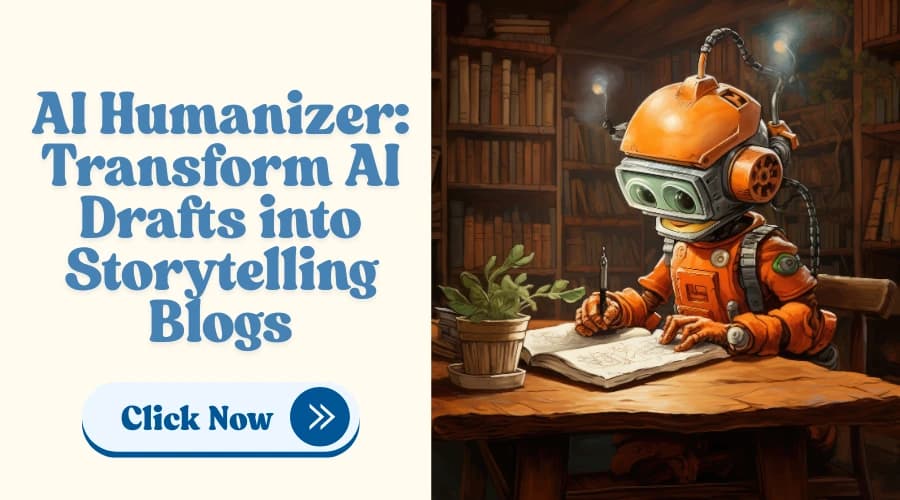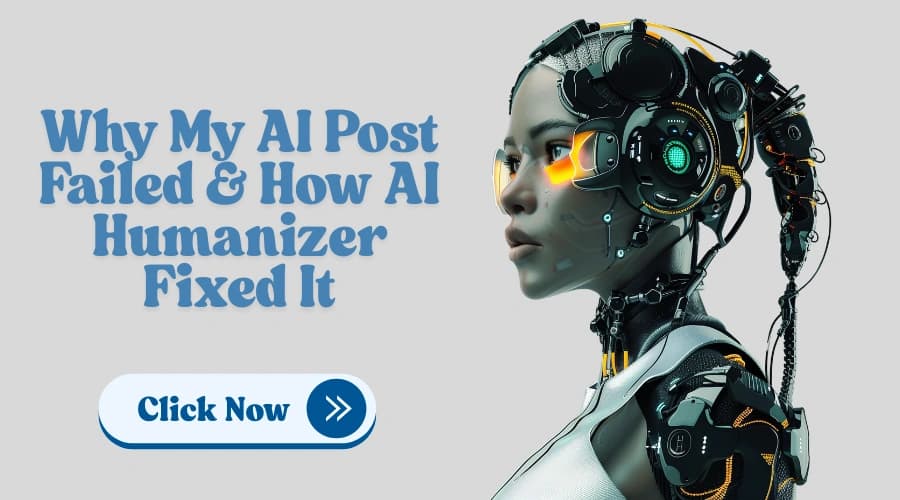Remember that feeling when you worked at night, after all your hard work, you got hit by the phrase, “Your content is AI”. It felt like all your efforts went down the drain, and someone hammered your brain. Right? You have put all your effort into refining, yet it remains flagged. Frustrating right?
Although AI has made writing faster, it still lacks depth, feels robotic and rigid in tone, and easily gets detected by AI Detection tools like ZeroGPT, GPTzero, or Turnitin. For students and professionals, this is not only an inconvenience but also a threat to their academic honesty and career credibility. In 2024, over 67% of students reported experiencing AI-detection issues even after editing the content manually.
In such situations, AI Humanizer proves to be an effective tool for turning AI-generated text into authentic, natural, and undetectable writing that sounds just like a human tone.
Understanding AI-generated Content
AI content is created by using advanced large language models (LLM) group such as GPT, Gemini, and Claude, which analyze various human-written texts to predict and generate content based on user prompts. These models can arrange a text in a logical and accurate sequence, mimic different tones, and align the relevant details.
How AI-Generated Content Works:
Pattern-Based Content Generation - The AI does not create any original thoughts. It relies on pre-existing structures, often producing results reflecting common phrases, industry jargon, and repetitive patterns instead of creating a different outcome.
Speed and Scalability - AI can create vast amounts of content within seconds, making it an effective tool for drafting assignments, reports, and marketing copy. However, while it excels in speed, it still lacks depth and critical analysis of human writing.
Lack of Contextual Awareness - Although AI can analyze patterns in text, it does not understand real-world experiences or human emotions. Thus, AI-generated content may sometimes misinterpret context, leading to inaccuracies, awkward phrasing, or a robotic tone lacking the warmth of human expression. A 2024 report by AI Ethics Watchdog revealed that 71% of AI responses in academic writing showed “partial or complete contextual mismatches.”
Key Differences Between AI-Generated and Human Writing
Despite the rapid advances in AI Technology, it still differs significantly from human writing in several key areas.
Creativity and Original Thought
AI-generated content is based on pre-existing data, meaning it often lacks originality and innovation. It cannot generate new ideas, be creative, or come up with personal experiences like human writing to make the content unique and engaging.
Student tip: Use AI only for outlines or idea generation. Infuse your writing with your personal take or a lived experience for higher credibility and relatability.
Sentence Flow and Natural Language Patterns
AI-generated text usually has rigid, repetitive phrasing and predictable sentence structures. This makes the content boring, unnatural, and robotic. Whereas, human writers have variations in sentence structures, storytelling, weaving in transitions, and conversational elements to enhance readability.
A 2025 University of Michigan Writing Lab Report found that human-written assignments had 4x more sentence variation and 3x higher reader engagement scores.
Student tip: Add informal transitions (“Honestly,” “Let’s break it down”) and conversational rhythms to improve flow.
Emotional Depth and Engagement
AI is incapable of understanding and expressing deep emotions, producing content that feels detached or overly formal. Human writing, however, reflects empathy, humor, and relatability, which help in engaging and creating a connection with readers. This is particularly important in storytelling, persuasive writing, and academic discussions.
Student tip: Add phrases like “I still remember…”, “What surprised me was…”, or “This challenged my view…” to bring warmth to your tone.
Detectability by AI Writing Detector Tools
With AI writing detectors like GPTZero and Turnitin’s AI writing detection, AI-generated content is more likely to get flagged, even after editing manually. AI detectors analyze textual consistency, sentence randomness, and statistical probability to assist the users in bypassing detection without proper humanizing AI techniques.
Student tip: Don’t rely on synonym swaps or grammar changes alone. Use tools like AI Humanizer to restructure and rephrase naturally.
The Challenges of AI-Generated Content for Students
Students rely on AI for research, brainstorming, and content generation, but using AI-assisted writing presents challenges that can affect their academic performance and credibility.
Strict AI Detection Policies in Universities
Over 60% of academic institutions now actively make use of AI detection software to identify AI-assisted content. Despite using AI ethically for drafting and idea generation, students are at risk of being flagged as AI-generated, which may result in penalties or rejection.
Lack of Clear Guidelines on AI Use
Many universities have adopted AI detection tools without providing clear guidelines for students on how to use AI responsibly. This creates confusion and causes panic among students as they find it tough to decide whether they can use AI in assignments, research papers, or thesis writing.
Inability to Pass AI Detection Despite Editing
Even when students choose to manually edit AI-generated text, tools like ZeroGPT and Turnitin are still capable of identifying AI-like patterns. This happens because AI generally produces repetitive, structured, and unnatural phrasing, making it difficult to fully humanize the text and refine it accordingly.
A 2023 report by AI Writing Watch found that 58% of AI-detected texts were manually edited versions of GPT content.
Generic and Impersonal Writing Style
AI-generated content is often shallow, disjointed, and lacks academic rigor, which leads to rejection or lower grades. Academic writing involves critical analysis, strong arguments from reliable sources, and proper citations, elements that AI struggles to provide. A 2024 Journal of Academic Writing report found that essays with personal narratives scored on average 22% higher in engagement metrics.
How AI Humanizer Pro Enhances AI-Generated Content
AI Humanizer is a cutting-edge tool designed to bridge the gap between AI-generated text and authentic human writing. It ensures that the AI-humanized content is not only undetectable but also reader-friendly, coherent, and free from plagiarism.
Key Features of Humanizer:
Advanced AI Humanization Technology
Humanizing AI uses its NLP algorithms to modify sentence structures, introduce natural variations, and ensure fluid transitions to make AI-generated text feel human-like. Unlike basic paraphrasing tools, AI humanizer ensures to refine text, improve its readability while preserving the original meaning.
Multi-Layer AI Detection Testing
Most tools test against one or two AI detectors only, whereas AI humanizer checks your content against 8+ AI detection tools from GPTZero to Turnitin to OpenAI’s classifier. This ensures that the content is undetectable without compromising its quality.
Customization for Tone, Style, and Length
You can easily adjust the tone from formal, informal, or academic, choose the kind of modification you need from subtle change to whole paragraph, and expand or shorten the content according to your requirements. This flexibility makes it suitable for academic, professional, and creative writing needs.
Transparent Editing Process for Ethical AI Use
AI Humanizer provides insights into the changes being made, ensuring users maintain control over the content. This ensures that the writing skills are improved.
Conclusion
AI-generated content is reshaping the world of writing, but it comes with challenges in creativity, emotional depth, originality, and AI detection. As universities are starting to use AI detector systems, students and professionals need solutions to refine AI-assisted text without compromising integrity.
AI-to-human text is the ultimate solution. AI Humanizer enables the user to improve the content, make it undetectable and readable, thus, the user can responsibly alter the AI-generated text without losing the integrity of the content.
Whether you are a student polishing an essay, a researcher refining a paper, or a professional crafting reports, AI Humanizer will help you turn AI-generated text into a reliable, effectively written and undetectable human-like writing.
Try AI Humanizer Pro today and experience the future of AI-assisted writing with confidence!






